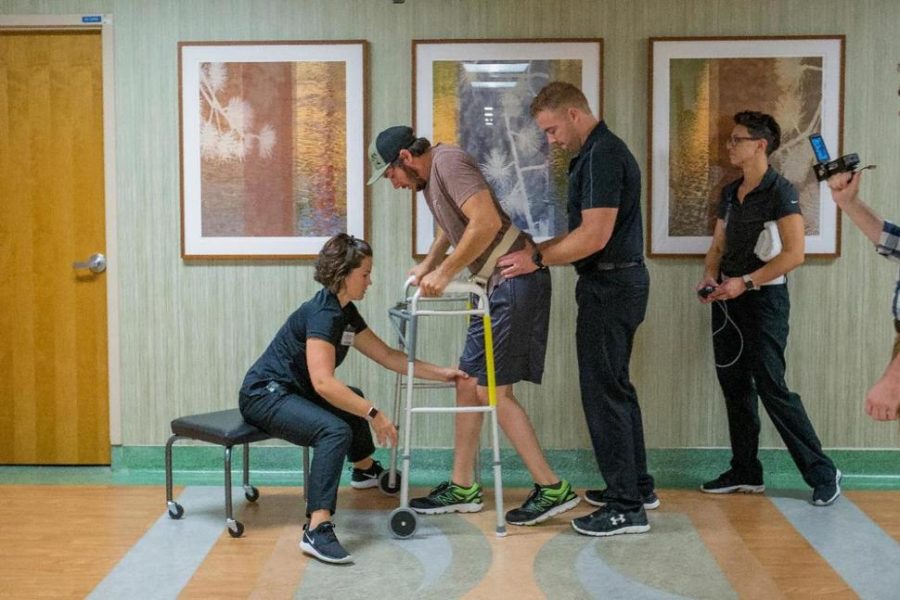The Cure for Paralysis?
October 1, 2018
Imagine being told that you would never be able to walk again. This was the case for Kelly Thomas, who was paralyzed in 2014 after a tragic car crash stripped her of her mobility. Years later, however, she found herself walking once more, due to a stimulation device implanted into her lower back.
In a recent study conducted at the Kentucky Spinal Cord Research Center, located in the University of Louisville, three patients who were once paralyzed regained the ability to walk, due to a technological advancement that assists their spinal cord with communicating with the brain.
The study involved four patients, and according to CNN, the four patients were able to stand and, out of the four, two were able to walk on the ground. According to Angeli, one of the lead researchers involved in the study, one of the patients that can walk “can’t even sit up” when the simulator is off, thus proving the technological implant’s success. The patients needed assistance – typically with a walker – in order to balance themselves as they walked. Nonetheless, researchers view this as a success, as they have a much greater range of mobility than they did before.
The simulation device doesn’t work instantly after insertion – it took one of the patients over ten months of therapy in order to walk. The researchers of the study believe that it was a combination of therapy and technology that enabled the patients’ progress. Susan Harkema of University of Louisville suggests that the spinal cord “relearns to do things, not as well as it did before, but it can [regain] function.” With technological assistance, the spinal cord is able to learn in a greater capacity.
This has happened before with similar methods of approach. In 2015 and 2016, rehabilitation with a “brain-computer interface” showed success with its patients. Much like the simulation device, this interface received brain signals that then generated muscle activity. A professor at the University of Miami, Monica Perez, adds that while these are “different in terms of the way to activate the central nervous system…the overall outcome is similar.”
With further analysis of these medical discoveries, the 1.2 million people that have to live with paralysis may have a chance at a better life – one that involves walking.













Chloe Boxer • Oct 31, 2018 at 1:21 pm
The first sentence of this article is the most poignant to me, and truly sets up the groundbreaking changes this discovery will bring to people who have had so much taken away from them. As always, you crafted a well-constructed article and utilized powerful words to portray an important new development.
Jacob Garcia • Oct 18, 2018 at 2:07 pm
I think that this is a very interesting article that discusses the imperative fact that people with medical disabilities have much more difficulty to be able to do much as any person can and they need to be paid more attention to.